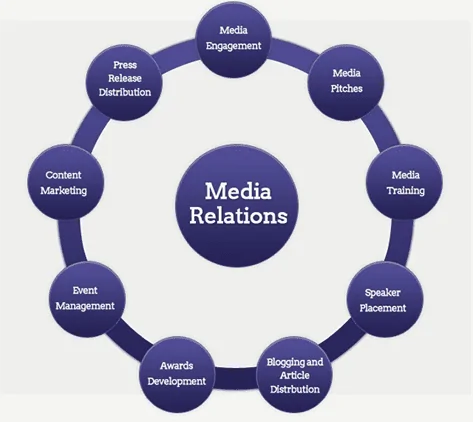What is International Public Relations Associations (IPRA)?
International Public Relations Associations (IPRA): Set up in May 1955, the IPRA is a world-wide professional organization dedicated to the highest standards of public relations practice. Competent professionals, who have practiced at a senior level or for at least five years and who operate internationally; can be a member of the association. In more than 60 countries, the International Public Relations Associations (IPRA) has over 800 individuals, forming a network and knowledge-base of experience and contact accessible to all members.
The IPRA is an independent organization. It has no formal links to other public relations bodies. However, it maintains close functional relationships with national and regional associations.
The IPRA’s link with the PRSI was made when the International Public Relations Associations (IPRA) adopted code of ethics in 1968. In 1974, the IPRA organized its first general assembly meeting in India. It brought the IPRA membership close contact with the members of the PRSI. India became closer to international PR practice with the attendance of the IPRA President and Council members at the National Conference of the PRSI. IPRA and PRSI relations improved with the election of an Indian, Mr. Sanat Lahiri, a Former President of PRSI, as the President of IPRA.
A large delegation of the PRSI attended the Seventh World Congress at Boston and even a larger one participated at the Eighth World Congress in London, presided over by Mr. Lahiri.
PR World Congress in India.
Once in every three years, the Public Relations World Congress is organized by the National Public Relations Association of the country where it is held in collaboration with the IPRA.
The first Public Relations World Congress was organized in 1958 in Brussels. The next nine World Congresses (held every three years) have been sponsored by the IPRA with the following themes: Public Relations for the Progress of the Community: Experience and Methods (Venice, 1961), Public Relations and the tides of change (Montreal, 1964), PR and the New Demands of a changing World (RIO de Janeiro, 1967), Public Relations:
The Bridge to International Understanding (Tel Aviv, 1970), Public Relations: A Profession Comes of Age (Geneva, 1973), Public Relations in the Parliament of Man (Boston, 1976) and Challenges of a changing, World (London, 1979). The ninth Public Relations World Congress was organized in Mumbai in 1982 with the theme of Interdependent World. The tenth was held in Amsterdam in 1985 with theme of “Between People and Power”.
The organizational strength of the PRSI and the growth of public relations in the country were mainly responsible in bringing the ninth PR World Congress to India. The IPRA felt that the holding of a World Congress would give a further boost to the PR profession in India and result in its greater acceptance among the user organizations.
More than 1,000 delegates from all over the world attended the Ninth World Congress. Commending the World Congress for its theme, then Prime Minister Indira Gandhi wrote, “The Theme of the Ninth Public Relations world Congress in Bombay is an idea that has been, and is an integrated part of our outlook”.
Eminent economists, scientists, educationists, political leaders and public relations practitioners from all over the world addressed the Congress. The print media covered the proceedings in great detail.
The World Congress, from the Indian point of view served two objectives:
- The Public Relations as a profession improved.
- The depth of Public Relations in India and the organizational strength of the PRSI were exposed to the world community.
Two Indian case studies, by Glaxo India and Hindustan Copper, were selected for honorable mention in the international PR case study competition.
IPRA Gold Paper No. 4.
The IPRA Gold Paper No.4, a model for PR Education for professional practice, was presented at the Ninth World Congress. The paper was prepared after a systematic study of the state of public relations education in different countries. IPRA President, J. Carrol Bateman and Secretary General, Sam Black in 1980 decided to organize an International PR educators meeting to discuss the world-wide standards and curriculum of the PR education.
The meeting, held in Hong Kong in September 1980, was participated by 20 academics and professionals from four continents. After 48 intensive hours of discussion it produced a report called, the Hong Kong Document.
For comment and considerations, the Document was presented to regional and national public relations associations and universities. The final document, the IPRA Gold Paper No.4, included the world-wide reactions, a curriculum model and a working definition of Public Relations.
As the concept of public relations is constantly developing, let us have a close look at this definition: Public Relations is a distinctive management function which helps establish and maintain mutual lines of communication, understanding, acceptance and cooperation between an organization and its public, involves the management of problems and issues, helps management to keep informed on and responsive to public opinion; defines and emphasizes the responsibility of management to serve the public interest, helps management keep abreast of and effectively utilize change, serving as an early warning system to help anticipate trends.
The following elements are found in the PR definition:
- The PR activities are involved in the management of problems and issues.
- It helps management to define its responsibilities to serve the public interest.
- It help management to keep abreast of change.
- The PR serves as an early warning system to foresee trends.





